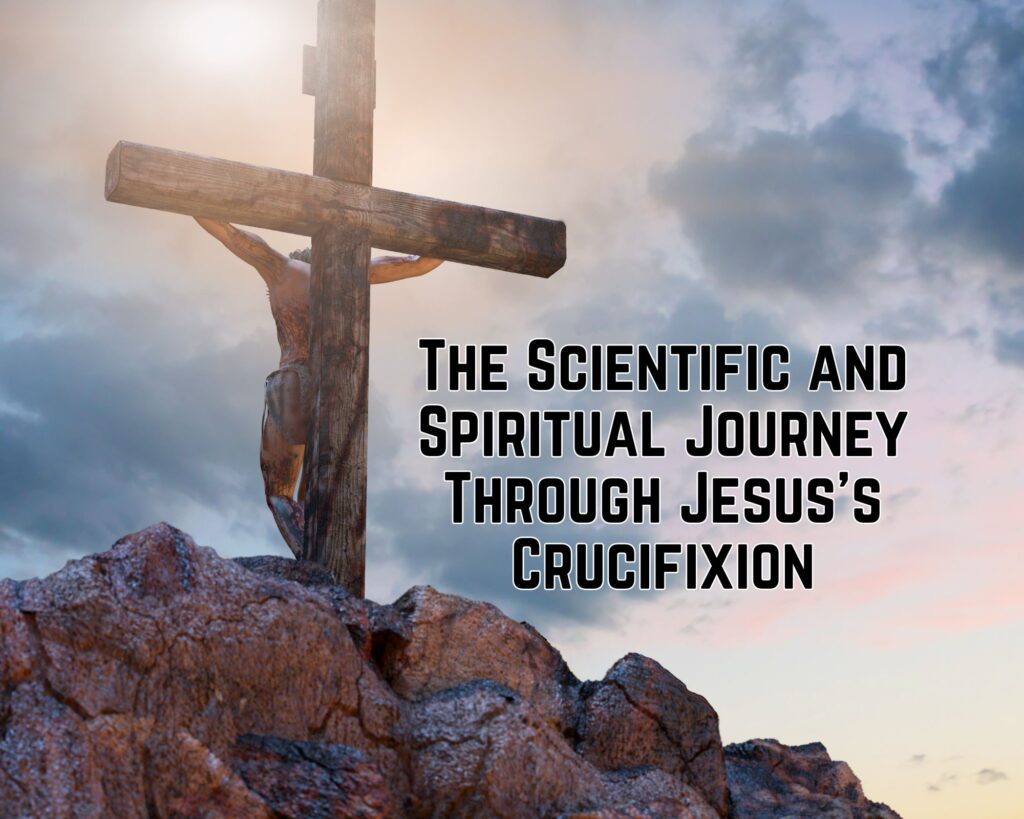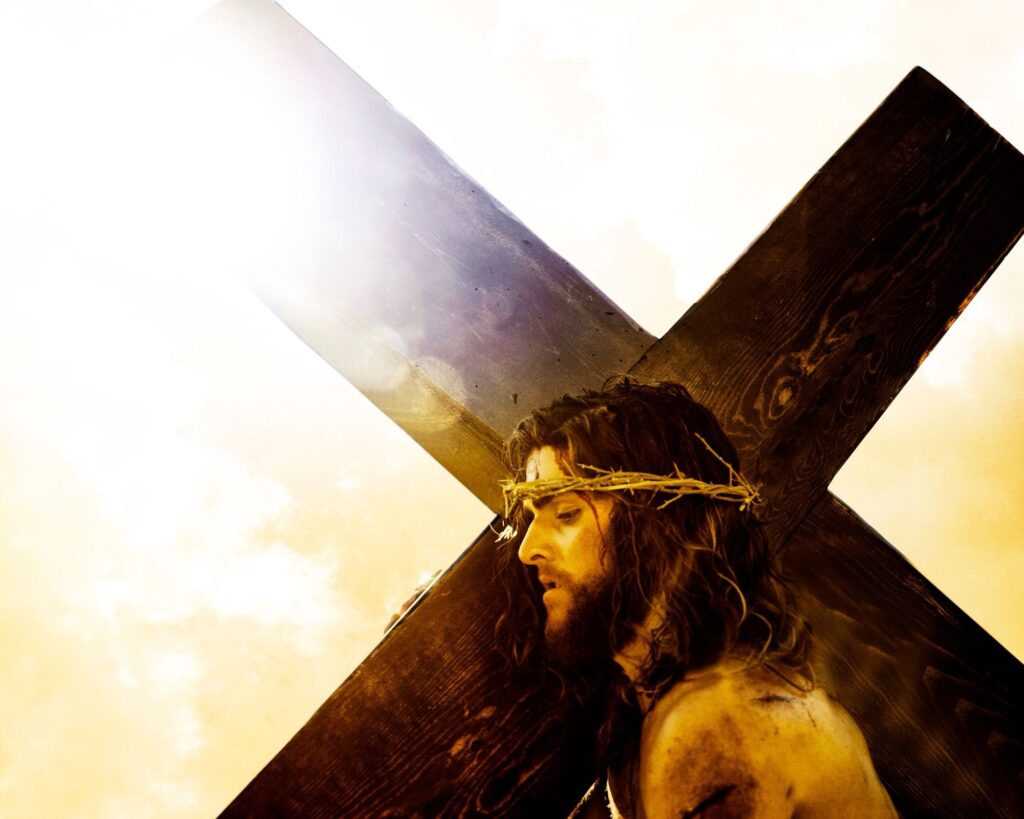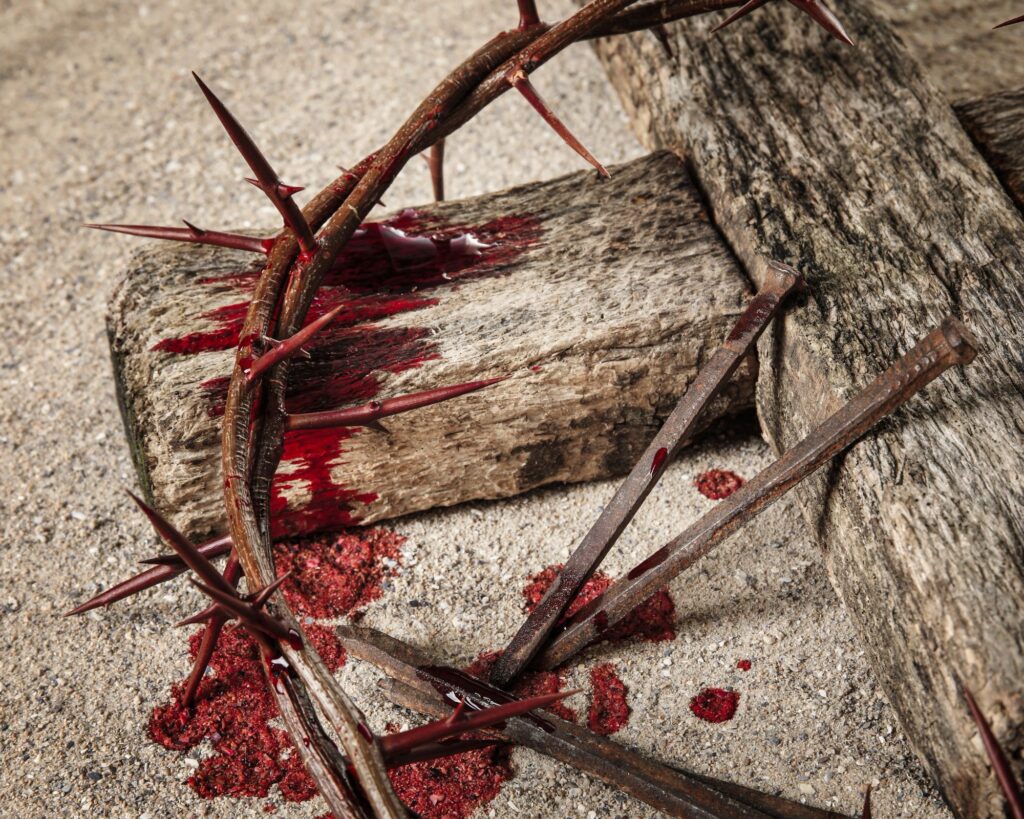
Bridging Faith and Science in Understanding the Crucifixion
In the realm of history, few events carry as profound a weight as the crucifixion of Jesus Christ. At the age of 33, Jesus was subjected to the cruelest form of capital punishment reserved for the most notorious criminals of the time. Yet, His crucifixion stands apart, not just for the severity of His punishment, but for the monumental impact it has had on Christian faith and humanity’s understanding of sacrifice and redemption.
Why delve into the scientific aspects of Jesus’s death, you might ask? For the next few minutes, as you journey through this narrative, I invite you to consider the physical realities of the crucifixion. This exploration is not about morbid fascination but about deepening our connection to the profound love and suffering Jesus endured for us. By intertwining the threads of science and spirituality, we can gain a more nuanced appreciation of the extent of Jesus’s sacrifice. It’s my prayer that through this understanding, the Holy Spirit will awaken in each of us a renewed reverence for who Jesus really is.
As we embark on this exploration, let’s remember that understanding the agony of Jesus’s crucifixion challenges us to confront the depths of His love and the enormity of His gift. In doing so, may we find our hearts moved and our spirits stirred, reaffirming our faith in the One who endured the cross for our salvation.

The Historical and Scientific Context of Crucifixion
What Made Crucifixion the “Worst” Death?
Crucifixion was not merely a method of execution but a statement by the Roman authorities, reserved for the most egregious offenders. It was designed to be a slow, agonizing spectacle, delivering maximum pain and humiliation. But for Jesus, the experience was further intensified by a series of torturous events leading up to His final moments on the cross. Unlike typical criminals who were tied to their crosses, Jesus was nailed—each nail, 6 to 8 inches long, hammered through His wrists and feet, amplifying His suffering beyond the already unimaginable horrors of crucifixion.
How Does Science Explain the Agony of Crucifixion?
From a scientific standpoint, the crucifixion of Jesus was a study in extreme physical and physiological torment. The nails driven through His wrists would have likely pierced the median nerve, causing excruciating pain. The positioning of His feet, nailed together, forced Jesus to support His body in a way that made breathing difficult and painful. Medical experts suggest that this form of execution led to a cascading series of physiological stresses, including severe blood loss, shock, and ultimately, death by asphyxiation or heart failure.

This brutal form of capital punishment was not just a physical ordeal but a meticulously crafted torture method, ensuring that the condemned would linger at the edge of death. For Jesus, who endured this and more—before the nails, He was scourged, beaten, and crowned with thorns—His crucifixion was the culmination of unimaginable physical suffering, undertaken willingly for the redemption of humanity.
As we contemplate the scientific details behind the method of crucifixion, it’s crucial to remember the spiritual implications of Jesus’s death. The physical agony He endured underscores the depth of His sacrifice, offering believers a profound perspective on the lengths to which He went to atone for our sins.

The Agony of Jesus’s Crucifixion: A Detailed Analysis
What Happened to Jesus’s Body During Crucifixion?
The crucifixion inflicted on Jesus was a confluence of physical traumas, each meticulously contributing to a prolonged and excruciating demise. The nails, each 6 to 8 inches long, were not merely symbols of His suffering but instruments of severe physiological torture. When hammered through the wrists, these nails likely impinged upon the median nerve, causing unbearable pain that radiated through His arms. The placement of the feet, nailed together, meant that Jesus had to endure the weight of His body on these singular points of agony, further complicating His attempts to breathe.
Beyond the nails, the crown of thorns pressed into His scalp would have caused significant blood loss, while the scourging prior to His crucifixion tore flesh from His body, weakening Him further. Each breath Jesus took on the cross was a Herculean effort, requiring Him to push against the nails in His feet and flex His arms, tearing at the wounds in His wrists. This cycle of pushing and lifting to breathe, only to slump again, would have been relentless torture.
Can Medical Science Illuminate the Suffering of Jesus?
Medical science sheds light on the horrific reality of crucifixion as a form of execution designed to deliver maximum suffering. The physiological effects on Jesus’s body—hypovolemic shock from blood loss, asphyxiation from the inability to maintain adequate respiration, and cardiac arrest—paint a grim picture of His final hours. The spear wound to His side, traditionally believed to have pierced His heart, would have been the culmination of this physical torment, confirming His death but also symbolizing the depth of His sacrifice.
Understanding the medical aspects of Jesus’s crucifixion brings into sharp focus the magnitude of His suffering. It wasn’t just the physical wounds that He bore; it was the weight of humanity’s sins. The scientific examination of His death not only corroborates the historical account but deepens our appreciation for the immense love and grace that powered His enduring of the cross.
As believers, reflecting on the medical intricacies of Jesus’s suffering compels us to grasp more fully the price paid on our behalf. It’s a somber reminder of the cost of our redemption and the unfathomable love that Jesus holds for each of us. This deep dive into the agony of His crucifixion serves not to dwell on the morbid details but to underscore the profound spiritual significance of His sacrifice, inviting us to respond with renewed faith and devotion.

The Power of Jesus’s Sacrifice: Spiritual Insights
How Does Jesus’s Physical Suffering Deepen Our Spiritual Understanding?
The excruciating details of Jesus’s physical suffering on the cross aren’t just historical or medical facts; they are profound spiritual truths that speak volumes about the depth of God’s love for humanity. Each wound, each moment of pain endured by Jesus, was a testament to the extent He was willing to go to offer us salvation. This understanding of His physical agony enriches our spiritual journey, emphasizing the significance of His sacrifice and the transformative power of His love.
Reflecting on the magnitude of Jesus’s suffering brings to light the gravity of sin and the price of our redemption. It’s a poignant reminder of what it means to be loved so deeply by God. Exploring the depths of Jesus’s sacrifice through the lens of God’s Ultimate Gift: Understanding the Depth of John 3:16, we find not only the story of unfathomable pain but of unmatched love—a love that chose to endure the cross for our sake.
Why Is It Important to Remember Jesus’s Sacrifice?
In our daily lives, it’s easy to become disconnected from the reality of Jesus’s sacrifice. Yet, remembering His crucifixion is central to our faith. It is the foundation upon which our relationship with God is built. The act of communion and the tradition of Sunday worship are not mere rituals; they are profound practices of remembering and honoring the sacrifice Jesus made. They reconnect us with the truth of what Jesus endured and why—our sin, His love, and our redemption.
Delving deeper into the importance of these practices, Gathering in His Name: Why Sunday Worship and Communion Matter offers insights into how these acts of worship not only honor Jesus’s sacrifice but also strengthen our communal and individual faith. They serve as regular, tangible reminders of His love and our ongoing relationship with Him.

The Role of Faith in Embracing Jesus’s Sacrifice
Understanding and accepting the sacrifice of Jesus requires more than intellectual acknowledgment; it demands a response of faith. This faith isn’t passive; it’s active and life-changing. It involves acknowledging Jesus before others, as He has called us to do, and living out the implications of His sacrifice in our everyday lives.
For those seeking to deepen their understanding of sin, salvation, and redemption, or for anyone on the path of discovering what it means to live a life transformed by Jesus’s love, Finding Hope in Truth: A Christian Guide to Sin, Salvation, and Redemption is an invaluable resource. It provides a comprehensive look at the core tenets of Christian faith and how Jesus’s sacrifice is central to our hope and redemption.

Building a Strong Foundation in Faith
How Can We Grow Our Understanding of Jesus’s Life and Sacrifice?
Deepening our understanding of Jesus’s life, death, and resurrection is fundamental to strengthening our faith. This journey of growth involves not just learning about the events of the crucifixion but immersing ourselves in the spiritual and historical context of His sacrifice. It’s about connecting the dots between what we know of His suffering and what it means for us today.
For those beginning their faith journey or seeking to deepen their existing beliefs, resources like the “How to Be a Christian Starter Guide” are invaluable. This guide provides a comprehensive overview of the basics of Christian faith, helping believers understand the significance of Jesus’s sacrifice and how it impacts every aspect of our lives.
The Importance of Old Testament Understanding
To fully appreciate the depth of Jesus’s sacrifice, it’s also crucial to understand the Old Testament laws and prophecies that foretold His coming. The Old Testament is not just a precursor to the New Testament; it’s the foundation upon which the story of Jesus is built. By exploring the Understanding Old Testament Laws: Civil, Ceremonial, and Moral, believers can gain insights into the continuity of God’s plan for salvation and how Jesus fulfilled these ancient prophecies and laws through His life and death.
Embracing Prayer and Scripture in Daily Life
Another key aspect of building a strong foundation in faith is incorporating prayer and scripture into our daily lives. Prayer is our direct line to God, a way to communicate our fears, desires, and thanks. Likewise, scripture offers guidance, comfort, and correction. Together, they are indispensable tools for navigating life’s challenges and growing closer to God.
For those seeking practical advice on maintaining a robust prayer life and finding peace through scripture, “Finding Peace with Prayer: Navigating Bad Days as a Christian” offers strategies for turning to God in every circumstance. It highlights how prayer and engagement with the Bible can provide solace and strength, regardless of the trials we face.
Why Your Own Bible Reading Matters
While communal worship and listening to sermons are important, personal Bible study is equally crucial. It allows us to engage directly with God’s Word, ask questions, and seek answers at our own pace. Personal Bible study fosters a deeper, more personal understanding of God’s message and plan for our lives. Encouraging believers to take this step, resources like a comprehensive Bible Reading Plan PDF in Chronological Order can guide readers through the scriptures in a structured, meaningful way.

Biblical Answers About Jesus’s Crucifixion
The crucifixion of Jesus Christ is central to Christian faith, raising many questions about its significance, the nature of Jesus’s sacrifice, and how it impacts believers today. Here are some common questions along with answers drawn from biblical passages:
Why Did Jesus Have to Die on the Cross?
Jesus’s death on the cross was the fulfillment of God’s plan for the redemption of humanity from sin. As stated in Romans 5:8, “But God demonstrates his own love for us in this: While we were still sinners, Christ died for us.” His sacrificial death served as the atonement for our sins, bridging the gap between humanity and God.
How Does Jesus’s Crucifixion Show God’s Love for Us?
John 3:16 provides a clear answer: “For God so loved the world that he gave his one and only Son, that whoever believes in him shall not perish but have eternal life.” God’s willingness to send His Son to suffer and die for us, even though we were undeserving, is the ultimate demonstration of His love and grace.
What Was the Significance of Jesus’s Last Words on the Cross?
Jesus’s last words, “It is finished” (John 19:30), signified the completion of His mission to offer salvation to the world. Through His death, the debt of sin was paid in full, fulfilling the prophecies and the law, and opening the way for all to enter into a relationship with God through faith in Christ.
How Should We Respond to Jesus’s Sacrifice?
Ephesians 2:8-9 teaches, “For it is by grace you have been saved, through faith—and this is not from yourselves, it is the gift of God—not by works, so that no one can boast.” Our response should be one of faith, accepting Jesus’s sacrifice as the means of our salvation, and living our lives in gratitude and obedience to God.
Can We Find Hope in Jesus’s Crucifixion?
Yes, absolutely. Romans 6:4-5 offers hope: “We were therefore buried with him through baptism into death in order that, just as Christ was raised from the dead through the glory of the Father, we too may live a new life. For if we have been united with him in a death like his, we will certainly also be united with him in a resurrection like his.” Jesus’s resurrection following His crucifixion assures us of eternal life and victory over sin and death.
How Does Jesus’s Death Affect Our Daily Lives?
Colossians 3:1-3 advises, “Since, then, you have been raised with Christ, set your hearts on things above, where Christ is, seated at the right hand of God. Set your minds on things above, not on earthly things. For you died, and your life is now hidden with Christ in God.” Knowing that Jesus died for us should transform how we live, prompting us to seek God’s kingdom and righteousness above all else.

Embracing the Journey of Faith
Understanding the crucifixion of Jesus Christ through both a scientific lens and a spiritual perspective offers a profound, multifaceted insight into the depths of His sacrifice. As we’ve journeyed from the historical context and physical agony of Jesus’s death to the spiritual insights and practical steps towards building a strong foundation in faith, it’s clear that this exploration is more than an academic exercise—it’s a pathway to deeper faith and devotion.
Reflecting on Jesus’s Sacrifice
Reflecting on the scientific and medical aspects of Jesus’s crucifixion brings us face to face with the reality of His suffering. It challenges us to consider the magnitude of His love for us, a love so vast that it embraced the worst form of death to offer us life. This reflection should stir within us not only gratitude but a renewed commitment to live in a manner worthy of His sacrifice.
Living Out the Implications of His Love
Understanding the depth of Jesus’s sacrifice compels us to respond. It calls us to a life of faith, lived out in daily choices, actions, and interactions. This journey involves constant learning, growing in spiritual maturity, and sharing the message of Jesus’s love and sacrifice with the world around us.
The Importance of Community and Continued Growth
Our faith journey is not meant to be walked alone. The Christian community—through worship, communion, and fellowship—plays a crucial role in supporting and encouraging each other in faith. Moreover, resources like the “Faith-Filled Finds: The Ultimate Gift Guide for Christians” offer tools and inspiration to deepen our faith and share it with others.
As we conclude this exploration, let us take to heart Jesus’s command to acknowledge Him before others. Let the knowledge of His sacrifice fuel our courage to live boldly for Him, to share His love and truth in a world in desperate need of hope. Let’s commit to being lifelong learners of the Word, utilizing resources like the Your 24/7 Bible Hotline for Life’s Emergencies for guidance and strength in every situation.
In embracing the journey of faith, let us hold fast to the truth of Jesus’s sacrifice, allowing it to transform us from the inside out. May we walk confidently in the knowledge of His love, carrying the message of the cross into every aspect of our lives. Remember, the power of Jesus’s sacrifice is not just a historical event; it’s the living hope that sustains us, guides us, and empowers us every day.
As an Amazon Associate we earn from qualifying purchases through some links in our articles.



